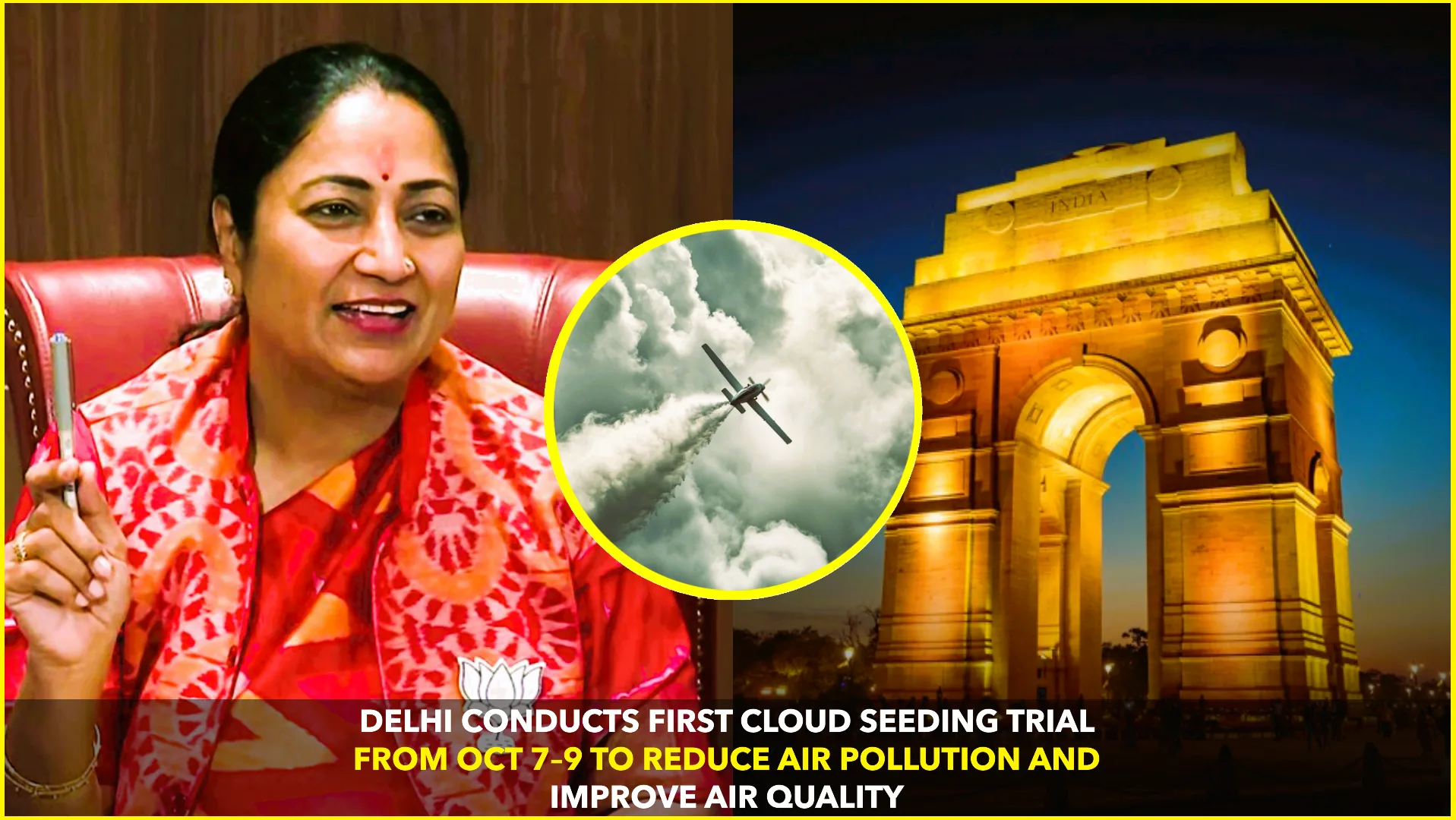Delhi, the capital of India, is once again grappling with hazardous air quality levels as winter approaches. This annual Delhi’s Air Quality Crisis: Understanding the Impact of Stubble Burning and Pollution on Public Health air quality crisis, primarily attributed to stubble burning in neighboring states like Punjab, Haryana, and Uttar Pradesh, poses serious health risks to residents in the Delhi-NCR region. Government initiatives and public health advisories are in place, but the recurring nature of this crisis underscores the challenges in addressing pollution effectively. This article explores the causes of Delhi’s pollution crisis, its effects on public health, and current governmental actions to mitigate the situation.
Understanding the Root Causes of Delhi’s Air Quality Crisis
Delhi’s air quality deteriorates significantly each winter, driven by a combination of meteorological factors and human activities. The primary factors include:
- Stubble Burning: Farmers in neighboring states burn crop residue after harvesting paddy to clear their fields for the next crop cycle. This practice, known as stubble burning, releases high amounts of particulate matter (PM2.5 and PM10) into the air, contributing to the pollution that drifts into Delhi.
- Vehicular Emissions: With one of the highest vehicle densities in the world, Delhi faces a significant pollution burden from vehicular emissions. Diesel trucks, buses, and cars emit nitrogen dioxide and other harmful pollutants that add to the city’s air quality problems.
- Industrial Emissions and Construction Dust: Factories around Delhi and unregulated construction activities release pollutants like sulfur dioxide and PM10. During winter, these pollutants mix with fog, creating smog that reduces visibility and exacerbates health risks.
- Weather Conditions: During winter, cooler temperatures and a phenomenon known as temperature inversion trap pollutants near the ground. This reduces air circulation and keeps harmful particles within breathing height, increasing pollution levels dramatically.
The Health Impact of Delhi’s Air Quality
Delhi’s air pollution crisis is not only an environmental issue but a major public health challenge. Exposure to high levels of air pollution is linked to numerous health risks, including:
- Respiratory Issues: High levels of PM2.5 and PM10 can penetrate deep into the lungs, leading to respiratory problems like asthma, bronchitis, and chronic obstructive pulmonary disease (COPD).
- Cardiovascular Problems: Long-term exposure to air pollution is known to increase the risk of heart diseases, including heart attacks and strokes. Pollutants such as nitrogen dioxide and sulfur dioxide contribute to cardiovascular strain.
- Children and Elderly Vulnerability: Children, the elderly, and individuals with pre-existing health conditions are particularly vulnerable to pollution-induced health issues. Studies have shown that children growing up in high-pollution areas are at risk of developmental and respiratory health issues.
- Mental Health Concerns: Emerging research links air pollution to mental health challenges, including stress and anxiety, as prolonged exposure to pollutants can lead to neurological inflammation.
Public Health Guidance for Residents in Delhi-NCR:
For those residing in Delhi-NCR, taking preventive measures can mitigate some of the health risks associated with air pollution. Here are essential tips to help residents protect themselves:
- Use Masks: High-efficiency particulate air (HEPA) or N95 masks can filter out PM2.5 particles, providing significant protection while outdoors.
- Limit Outdoor Activities: Reduce outdoor activities, especially during peak pollution hours (early morning and evening). Vulnerable groups, like children and the elderly, should avoid outdoor exposure when pollution levels are high.
- Invest in Air Purifiers: Indoor air quality can also be compromised, so using air purifiers with HEPA filters at home can help reduce indoor pollutant levels.
- Stay Hydrated and Maintain a Balanced Diet: Drinking plenty of water and consuming a diet rich in antioxidants can help the body detoxify pollutants more effectively.
Government Actions and Initiatives to Tackle Delhi’s Air Quality Crisis
In response to Delhi’s recurring air quality crisis, both state and central governments have introduced policies and measures aimed at curbing pollution. Some of the significant initiatives include:
1. The Graded Response Action Plan (GRAP)
The Graded Response Action Plan (GRAP) is a set of measures activated in Delhi and NCR as pollution levels rise. Implemented by the Environment Pollution (Prevention and Control) Authority (EPCA), GRAP involves measures such as:
- Suspending construction activities during severe pollution levels.
- Restricting vehicular movement and encouraging public transportation.
- Banning diesel generators in residential and industrial areas during high alert days.
By implementing GRAP in stages according to pollution levels, the government aims to proactively reduce pollution, especially during the winter months.
2. Promotion of Cleaner Farming Practices
The central and state governments have rolled out initiatives to help farmers adopt cleaner farming practices. Subsidies and machinery like the Happy Seeder and Super Straw Management System (SMS) have been provided to reduce the reliance on stubble burning. Although there has been some progress, a lack of awareness and the high cost of alternative equipment remain challenges.
3. Delhi’s Odd-Even Scheme
The Delhi government has periodically implemented an “odd-even” scheme to reduce vehicular pollution. Under this system, cars with odd or even-numbered plates are allowed on the roads on alternate days. Though effective in reducing emissions temporarily, the scheme is not a long-term solution and relies heavily on public cooperation.
4. Introduction of Electric Vehicles (EVs)
To reduce emissions from vehicles, the Delhi government has introduced incentives for electric vehicles (EVs) and aims to transition its public transportation fleet to electric by 2030. This policy encourages citizens to switch to EVs through tax benefits, subsidies, and increased availability of charging infrastructure across the city.
Related Content:
International Examples and Possible Solutions
Several cities around the world have successfully reduced air pollution levels through innovative solutions, offering possible models for Delhi. For instance:
- Beijing, China: Through strict emission regulations, closing down high-pollution industries, and investing heavily in public transportation, Beijing managed to cut its air pollution by 35% over four years.
- London, UK: London has implemented an ultra-low emission zone (ULEZ) to limit vehicle emissions. Only vehicles meeting strict emission standards are allowed within central London, significantly reducing air pollution.
Delhi could consider similar initiatives, especially around emission regulations and expanded public transport options.
External Resources for Further Reading:
- World Health Organization (WHO) Air Quality Guidelines
- Central Pollution Control Board (CPCB) Real-Time Air Quality Data
The Role of Citizens in Combating Pollution
While government policies and international models play an important role, citizen cooperation is essential in the fight against pollution. Individual actions, such as using public transport, carpooling, and reducing waste, can make a considerable difference in reducing emissions. Local communities can also raise awareness about air pollution and advocate for clean energy solutions in their neighborhoods.
Long-Term Strategies for Sustainable Change
To bring about lasting change, policymakers must focus on sustainable development that balances growth with environmental preservation. Some of the long-term measures Delhi could consider include:
- Transitioning to Renewable Energy: Shifting from coal-based power plants to renewable energy sources, such as solar and wind, can reduce emissions substantially.
- Developing Green Infrastructure: Increasing green spaces and planting trees across the city can help reduce air pollution by absorbing carbon dioxide and releasing oxygen.
- Strict Implementation of Emission Standards: Regular monitoring and stricter enforcement of emissions regulations for industries and vehicles are necessary for meaningful progress.
Conclusion
Delhi’s air quality crisis is a complex issue with far-reaching implications for public health, environmental sustainability, and economic growth. While governmental actions such as GRAP and incentives for electric vehicles are steps in the right direction, there is a pressing need for long-term solutions that address the root causes of pollution. From investing in cleaner energy alternatives to encouraging responsible behavior among citizens, tackling Delhi’s air quality crisis requires a collective effort.
As residents navigate the health risks associated with hazardous air quality, staying informed and adopting preventive measures can play a vital role in safeguarding their well-being. Through sustained policy changes and active public participation, Delhi can hope to see improved air quality and a healthier future for its citizens.










